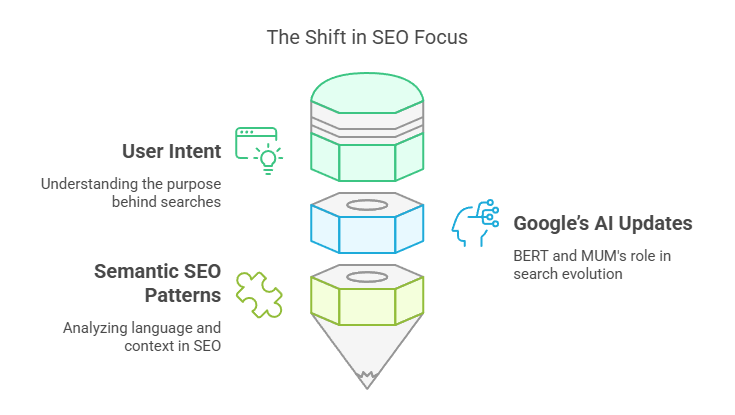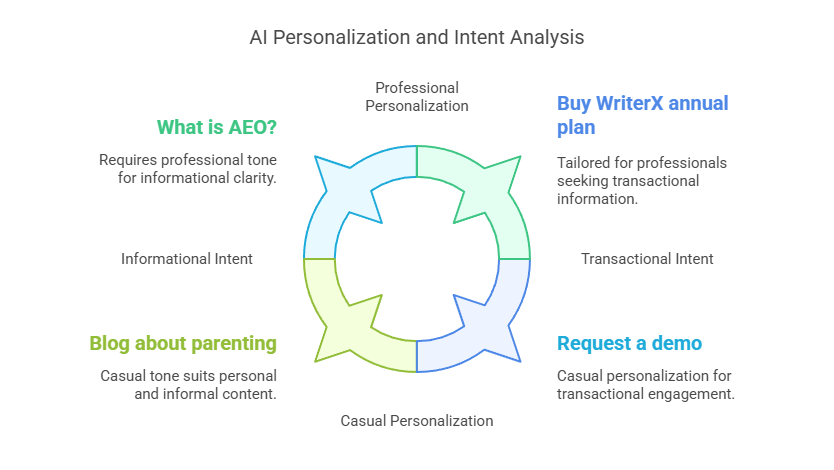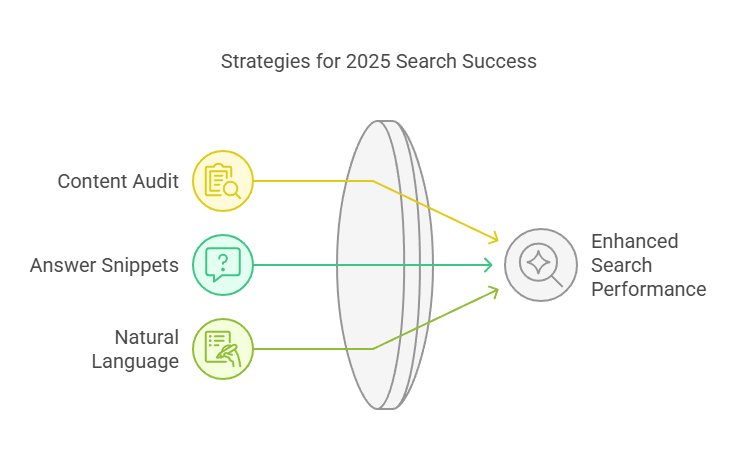Imagine typing “best coffee near me” into Google. Ten years ago, you’d get a list of cafes stuffed with those exact keywords. Today, Google knows you’re craving a latte within walking distance—and by 2025, it’ll predict whether you prefer oat milk or a cozy ambiance. This shift from keyword-centric SEO to intent-driven content is reshaping digital marketing. Let’s explore how businesses can adapt to stay visible, relevant, and ahead of the curve.
Why User Intent Is Stealing the Spotlight
Keywords used to rule SEO. Marketers jammed phrases like “top marketing tools” into content, hoping to rank. But Google’s algorithms now prioritize why someone is searching, not just what they type. For example, “how to fix a leaky faucet” could mean a DIY tutorial (informational intent) or a local plumber’s contact info (transactional intent). WriterX’s 2025 content trends report shows that 72% of top-ranking pages align with deep user intent, not just keyword density.
Google’s Evolution: From Keywords to Context
Google’s BERT and MUM updates have transformed search into a conversation. These AI models analyze context, synonyms, and even cultural nuances. A query like “budget-friendly laptops for students” isn’t just about specs—it’s about affordability, durability, and portability. Tools like WriterX help marketers decode this intent by analyzing semantic SEO patterns, ensuring content answers unspoken questions.

The Hidden Flaws of Keyword-Only Strategies
Relying solely on keywords is like using a map from 2010—it might get you somewhere, but not efficiently. Here’s why:
- Stiff Content: Over-optimized posts sound robotic. (“Best marketing tools! Top marketing tools! Marketing tools 2025!”)
- Missed Opportunities: Focusing on “what” ignores “why.” A search for “WordPress plugins” could mean a developer seeking code snippets or a blogger needing SEO help.
- Algorithm Penalties: Google’s Helpful Content Update demotes keyword-stuffed pages lacking depth.
For instance, a bakery blog targeting “wedding cake recipes” might miss users searching for “allergen-free wedding desserts.” WriterX’s AI-powered strategy tools identify these gaps, turning vague keywords into intent-driven topics.
How AI Bridges the Gap Between Intent and Keywords
AI tools like WriterX act as translators, converting user intent into actionable keywords. Here’s how:
1. Decoding Search Purpose
AI classifies intent into four categories:
- Informational: “What is AEO?”
- Navigational: “WriterX pricing page”
- Commercial: “Best AI writing tools 2025”
- Transactional: “Buy WriterX annual plan”
By analyzing these patterns, WriterX’s SEO optimization suite suggests content structures that match intent. A “commercial” query might need comparison charts, while “informational” requires step-by-step guides.
2. Predicting Unspoken Needs
In 2025, AI won’t just react to searches—it’ll anticipate them. If someone reads “how to train AI tools,” they might later seek “how to humanize AI content.” WriterX’s workflow automation links related topics, creating content clusters that keep users engaged longer.
3. Personalizing at Scale
A mom blogging about parenting has different intent than a Fortune 500 CMO. AI tailors content by:
- Adjusting tone (casual vs. professional)
- Recommending region-specific examples
- Highlighting relevant CTAs (e.g., “Download our parenting ebook” vs. “Request a demo”)
Tools like WriterX’s brand voice trainer ensure personalization doesn’t sacrifice consistency.

Winning the 2025 Search Game: 3 Actionable Tips
1. Audit Existing Content for Intent Gaps
Use AI tools to scan your blog for:
- Posts ranking for irrelevant keywords
- High bounce rates (indicates mismatched intent)
- Low time-on-page (content isn’t answering questions)
WriterX’s content audit features flag these issues, suggesting rewrites or mergers.
2. Create “Answer Snippets” for Voice Search
By 2025, 50% of searches will be voice-based. People ask questions conversationally (“Hey Siri, how do I humanize AI content?”). Structure content with:
- Clear headers (H2/H3) answering “who,” “what,” “why”
- Bolded key phrases (e.g., “Humanizing AI content requires three steps:”)
- Concise summaries under 40 words
WriterX’s WordPress plugin auto-formats posts for snippet readiness.
3. Blend Keywords with Natural Language
Target keywords remain important—but as ingredients, not the whole recipe. For “best AI writing tools,” include:
- Related terms: “affordable,” “for small businesses”
- Questions: “Can AI tools match human writers?”
- Conversational phrases: “PS—here’s how we screwed this up initially”
WriterX’s natural language generator weaves keywords into human-like text effortlessly.

The Bottom Line? Intent Is the New Keyword
Keywords are stepping stones, but user intent is the destination. By 2025, brands that obsess over “what users really need” will outrank those chasing search volume alone. Tools like WriterX simplify this shift, offering AI-driven intent analysis alongside classic SEO features. The future isn’t about choosing between keywords and intent—it’s about using both to build content that’s as helpful as your favorite coffee shop barista.

